- Preparing the Soil
- Choosing the Right Time
- 1. Climate:
- 2. Frost:
- 3. Soil temperature:
- 4. Daylight hours:
- 5. Other plantings:
- Selecting Healthy Seedlings
- Transplanting the Seedlings
- Providing Adequate Watering
- 1. Watering Frequency
- 2. Watering Method
- 3. Deep Watering
- 4. Mulching
- 5. Watering Time
- 6. Checking Soil Moisture
- 7. Drainage
- Protecting from Pests
- 1. Inspect regularly
- 2. Remove affected plants
- 3. Companion planting
- 4. Row covers
- 5. Organic pesticides
- 6. Handpicking
- 7. Mulch
- 8. Proper hygiene
- Fertilizing the Plants
- 1. Preparing the Soil
- 2. Choosing the Right Fertilizer
- 3. Applying the Fertilizer
- 4. Fertilizing Schedule
- 5. Signs of Overfertilization
- Harvesting and Storing
- 1. Harvesting:
- 2. Cleaning:
- 3. Trimming:
- 4. Storing:
- 5. Usage:
- “Question-Answer”
- What is Peking cabbage?
- When is the best time to plant Peking cabbage seedlings?
- How do I prepare the soil for planting Peking cabbage seedlings?
- How do I plant Peking cabbage seedlings?
- How often should I water Peking cabbage seedlings?
- How do I protect Peking cabbage seedlings from pests?
- How long does it take for Peking cabbage seedlings to mature?
- “Video” How to Grow Cabbage to Fast Harvest in 90 days – Farming Complete Guide from Planting to Harvest
When it comes to growing Peking cabbage, also known as Chinese cabbage, the summer season is an ideal time to start seedling planting. Peking cabbage is a popular leafy vegetable that is widely used in Asian cuisine for its mild and sweet flavor. Whether you are an avid gardener or a beginner, this step-by-step guide will help you successfully plant Peking cabbage seedlings in the summer.
First and foremost, it is important to select a suitable location for your Peking cabbage seedlings. Choose an area in your garden that receives full sunlight, as Peking cabbage thrives in sunny conditions. It is also essential to ensure that the soil is well-drained and rich in organic matter. You can improve the soil quality by adding compost or well-rotted manure.
Once you have chosen the right location, prepare the soil by removing any weeds or rocks. Use a garden fork or a tiller to loosen the soil to a depth of about 8-10 inches. This will create a loose and friable soil structure, allowing the roots of the Peking cabbage seedlings to penetrate easily and absorb nutrients.
Now it’s time to sow the Peking cabbage seeds. Start by creating shallow furrows or rows in the soil, spaced about 12 inches apart. Place the seeds in the furrows, keeping a distance of about 2 inches between each seed. Cover the seeds with a thin layer of soil, ensuring that they are well-protected.
Water the seeds gently using a watering can or a hose with a gentle sprayer attachment. Be careful not to wash away the seeds or create puddles of water. Keep the soil moist, but avoid over-watering, as it can lead to rotting or fungal diseases. Within a few days, you will start to see the Peking cabbage seedlings germinating.
Remember to thin out the seedlings once they have grown to a height of about 2 inches. Remove the weaker seedlings, leaving a distance of about 6-8 inches between each plant. This will allow enough space for the Peking cabbage to grow and develop properly.
As your Peking cabbage seedlings continue to grow, make sure to keep the soil evenly moist and provide them with regular waterings. You can also apply a balanced organic fertilizer every 2-3 weeks to promote healthy growth and development.
By following these step-by-step techniques, you will be able to grow your own delicious and fresh Peking cabbage at home. Enjoy the satisfaction of harvesting your own homegrown vegetables and adding them to your favorite recipes!
Preparing the Soil
The first step in planting Peking cabbage seedlings is to prepare the soil in the planting area. This is essential to provide a healthy and nutrient-rich environment for the plants to grow. Follow these steps to prepare the soil:
- Choose a suitable location for planting your Peking cabbage seedlings. The area should receive full sun or partial shade.
- Clear the area of any weeds, rocks, or debris. These can hinder the growth of the seedlings and compete with them for nutrients.
- Loosen the soil with a garden fork or tiller. This helps to improve drainage and allows the roots to penetrate the soil easily.
- Remove any large clumps of soil and break them down into smaller pieces. This helps to create a fine and even texture.
Once the soil has been prepared, it is important to test its pH level and nutrient content. Peking cabbage prefers a slightly acidic soil with a pH level between 6.0 and 6.5. If the soil pH is too high, you can add sulfur or peat moss to lower it. If it is too low, you can add lime to raise it.
Adding organic matter, such as compost or well-rotted manure, to the soil is also recommended. This helps to enrich the soil with essential nutrients and improve its overall fertility. Spread a layer of organic matter over the planting area and mix it into the soil using a garden fork or tiller.
Finally, rake the soil to create a smooth and level surface. This will make it easier to plant the Peking cabbage seedlings and ensure even growth. The soil is now ready for planting!
Choosing the Right Time
Planting Peking cabbage seedlings at the right time is crucial for a successful harvest. The ideal time for planting depends on the climate and growing conditions in your area. Here are some factors to consider when choosing the right time:
1. Climate:
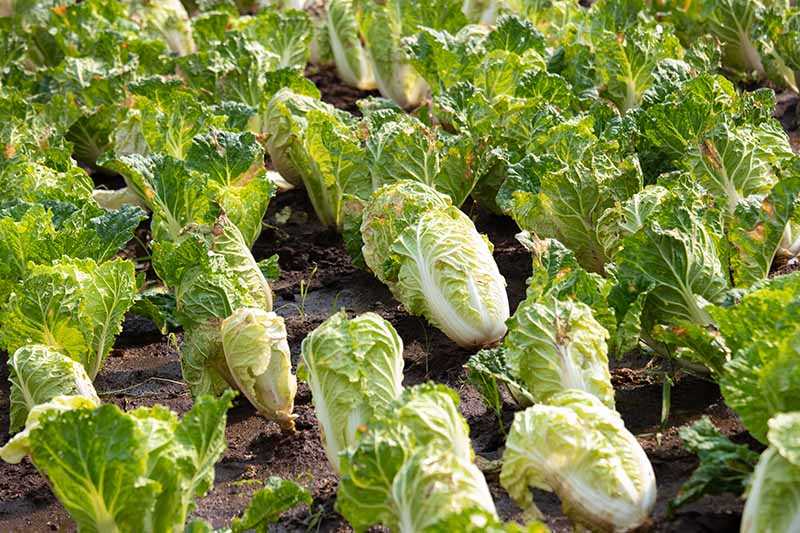
Peking cabbage is a cool-season crop that prefers moderate temperatures. It is best to plant seedlings when the average daily temperatures range between 50°F (10°C) and 75°F (24°C).
2. Frost:
Peking cabbage seedlings are not frost-tolerant, so it is important to avoid planting them too early in the spring or too late in the fall when frost is still a possibility. Check your local frost dates to determine the best time to plant.
3. Soil temperature:
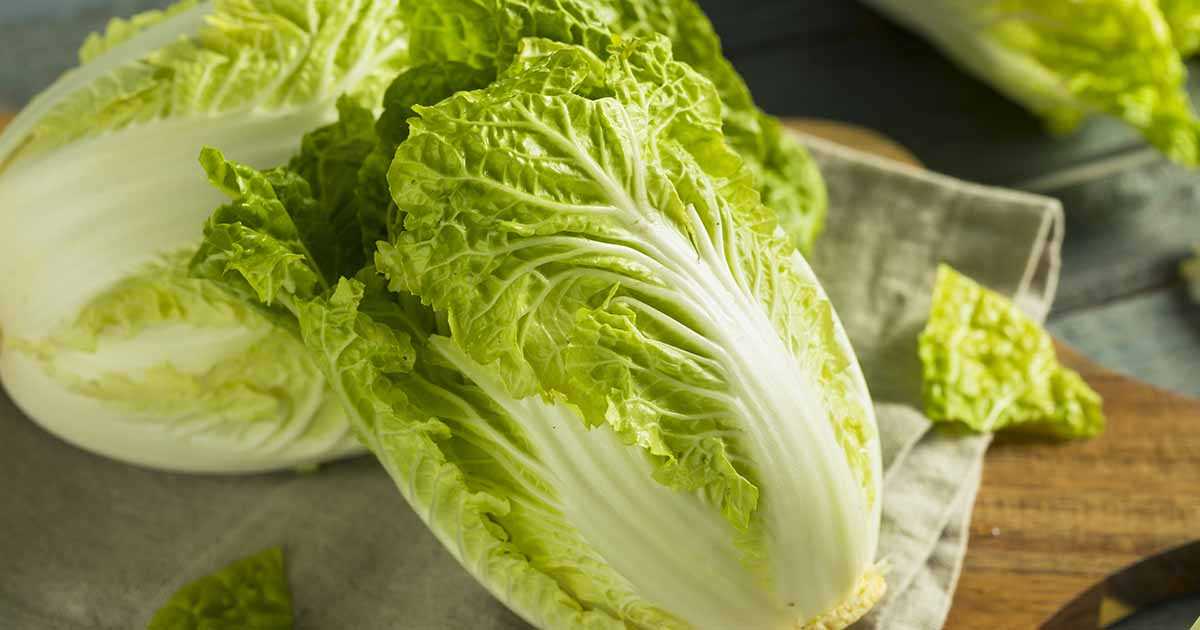
Planting Peking cabbage seedlings in soil that is too cold can result in poor root development and slow growth. The soil temperature should ideally be around 50°F (10°C) before planting.
4. Daylight hours:
Peking cabbage is a short-day plant, meaning it requires short daylight hours for proper growth and head formation. In areas with long daylight hours during the summer, it is best to plant seedlings in early spring or late summer when the days are shorter.
5. Other plantings:
Consider the other crops you have planted or plan to plant in your garden. Peking cabbage grows well alongside other cool-season vegetables like lettuce, spinach, and radishes. Plan your planting schedule to ensure that Peking cabbage seedlings have enough space and aren’t crowded by other plants.
By considering these factors and choosing the right time to plant your Peking cabbage seedlings, you can optimize their growth and ensure a bountiful harvest.
Selecting Healthy Seedlings
When planting Peking cabbage seedlings, it is important to choose healthy and vigorous plants. Here are some tips to help you select the best seedlings for your garden:
- Appearance: Look for seedlings that have vibrant and green leaves. Avoid plants with yellowing or wilting foliage, as this could indicate poor health.
- Size: Choose seedlings that are of a suitable size for transplanting. They should have developed a few true leaves but still be small and manageable.
- Roots: Gently remove the seedling from its container to check the roots. Healthy seedlings will have white, well-developed roots. Avoid plants with brown or rotten roots.
- Stem: Examine the stem of the seedling. It should be straight and sturdy, without any signs of damage or bending.
- No pests: Check for any signs of pest infestation, such as holes in the leaves or visible insects on the plant. Avoid seedlings that show signs of pest damage.
By taking the time to select healthy seedlings, you can give your summer Peking cabbage a strong start and increase their chances of successful growth.
Transplanting the Seedlings
Once your Peking cabbage seedlings have grown to a height of around 3-4 inches and have developed 3-4 true leaves, they are ready to be transplanted into the garden.
Step 1: Choose a sunny spot in your garden with well-drained soil. Prepare the soil by loosening it with a garden fork or tiller. Remove any weeds or rocks from the planting area.
Step 2: Dig a hole for each seedling that is slightly larger than the size of its root ball. The holes should be spaced about 8-12 inches apart in rows that are 12-18 inches apart.
Step 3: Carefully remove each seedling from its starter tray or pot, being careful not to damage the roots. Gently tease apart any tangled roots, if necessary.
Step 4: Place each seedling into a hole, making sure that the root ball is level with or slightly above the soil surface. Fill in the hole with soil, firming it gently around the base of the seedling.
Step 5: Water the newly transplanted seedlings thoroughly to settle the soil around the roots. Avoid getting water on the leaves, as this can increase the risk of disease.
Step 6: Apply a layer of mulch around the base of each seedling to help retain moisture and suppress weeds. This will also help to regulate soil temperature.
Step 7: Continue to water the seedlings regularly, keeping the soil evenly moist but not saturated. Monitor the plants for any signs of pests or disease, and take appropriate action if necessary.
Step 8: As the Peking cabbage plants grow, you may need to thin them to allow for proper air circulation and plant growth. Remove any weak or overcrowded seedlings, leaving only the healthiest ones.
Step 9: Harvesting can typically begin in about 70-90 days, depending on the variety of Peking cabbage you are growing. Enjoy the fresh and tasty harvest!
Providing Adequate Watering
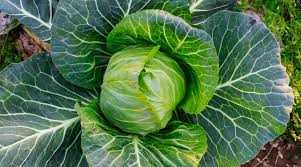
Proper watering is crucial for the successful growth of Peking cabbage seedlings. Here are some tips to ensure your seedlings receive adequate moisture:
1. Watering Frequency
Water the seedlings regularly to keep the soil consistently moist. Aim to water them at least once a day or more frequently when the weather is particularly hot and dry. Avoid overwatering, as this can lead to root rot.
2. Watering Method
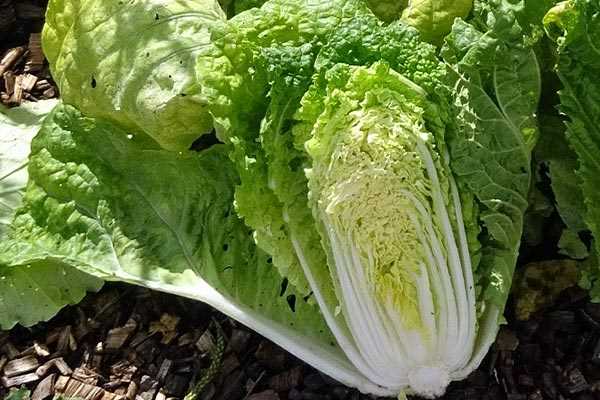
When watering, avoid splashing water on the seedlings’ leaves to prevent the risk of disease. Instead, direct the water at the soil around the base of the plants. This ensures that the roots are properly hydrated.
3. Deep Watering
To encourage deep root growth, water the seedlings thoroughly each time, allowing the water to penetrate deep into the soil. This promotes stronger and more resilient plants.
4. Mulching
Applying a layer of mulch around the seedlings helps to retain moisture in the soil, reducing the need for frequent watering. Additionally, mulch helps to regulate soil temperature and suppress weed growth.
5. Watering Time
The best time to water Peking cabbage seedlings is in the early morning or late afternoon. This allows the water to be absorbed before the heat of the day and reduces the risk of fungal diseases.
6. Checking Soil Moisture
Regularly check the moisture level of the soil by sticking your finger into the ground near the seedlings. If the top inch of soil feels dry, it’s time to water. If it feels moist, wait a little longer before watering again.
7. Drainage
Ensuring proper drainage is essential for maintaining the health of your Peking cabbage seedlings. Make sure the containers or planting beds have drainage holes to prevent waterlogged soil, which can lead to root rot.
By following these watering techniques, you can provide your Peking cabbage seedlings with the moisture they need to grow strong, healthy, and productive.
Protecting from Pests
Pests can be a significant threat to your summer Peking cabbage seedlings. Taking proactive measures to protect your plants can help ensure healthy growth and a bountiful harvest. Here are some steps you can take to protect your cabbage seedlings from pests:
1. Inspect regularly
Regularly inspect your cabbage seedlings for any signs of pest damage. Look for chewed leaves, holes, or discolored spots. Early detection can help you address the problem before it becomes severe.
2. Remove affected plants
If you spot any plants that are heavily infested or beyond repair, promptly remove them from your garden. This will prevent the pests from spreading to healthy plants.
3. Companion planting
Consider companion planting to deter pests naturally. Some plants, such as marigolds or aromatic herbs like basil and sage, can help repel pests. Interplant these companion plants with your cabbage seedlings to create a natural barrier.
4. Row covers
Use row covers to physically protect your cabbage seedlings from pests. Row covers are made of lightweight fabric that allows sunlight and water to reach the plants while keeping pests out. Secure the row covers tightly to prevent pests from sneaking in.
5. Organic pesticides
If pests persist despite your efforts, you may need to resort to organic pesticides. Look for options that are specifically labeled for cabbage pests and follow the instructions carefully. Avoid using chemical pesticides that may harm beneficial insects or contaminate your harvest.
6. Handpicking
For smaller infestations, consider handpicking the pests off your cabbage seedlings. This can be time-consuming but can be an effective way to control the population and minimize damage.
7. Mulch
Apply a layer of organic mulch around your cabbage seedlings. This helps to deter pests by making it harder for them to access the plants. Mulch also conserves moisture and suppresses weeds, providing additional benefits to your seedlings.
8. Proper hygiene
Maintaining proper hygiene practices in your garden can help prevent pest infestations. Remove plant debris regularly, keep the area clean, and rotate your crops each season to minimize pest buildup.
By adopting these pest protection measures, you can reduce the risk of pest damage and ensure the healthy growth of your summer Peking cabbage seedlings.
Fertilizing the Plants
To ensure healthy growth and development of your summer Peking cabbage seedlings, it is important to provide them with proper nutrients. Fertilizing the plants at the right time and in the right amounts can significantly improve their yields and overall quality.
1. Preparing the Soil
Before planting the seedlings, prepare the soil by adding organic matter such as compost or well-rotted manure. This will enrich the soil with essential nutrients and improve its fertility.
2. Choosing the Right Fertilizer
There are different types of fertilizers available, both organic and synthetic. Choose a fertilizer that is rich in nitrogen, phosphorus, and potassium (NPK). These three nutrients are crucial for the healthy growth of the plants.
3. Applying the Fertilizer
Once the seedlings have been transplanted into the garden, it’s time to start fertilizing. Follow these steps:
- Determine the recommended application rate of the fertilizer based on the manufacturer’s instructions.
- Spread the fertilizer evenly around each plant, making sure not to allow it to come into direct contact with the leaves or stems.
- Gently work the fertilizer into the top few inches of soil using a garden fork or a rake.
- Water the plants thoroughly after applying the fertilizer to help it dissolve and reach the root zone.
4. Fertilizing Schedule
Fertilize the summer Peking cabbage seedlings at regular intervals to provide them with a steady supply of nutrients. Generally, it is recommended to fertilize once every 2-3 weeks during the growing season.
5. Signs of Overfertilization
Be cautious not to overfertilize your plants, as this can lead to negative effects. Signs of overfertilization include leaf burn, stunted growth, and excessive foliage but low fruit production. If you notice any of these signs, reduce the amount of fertilizer you are applying.
By following these fertilizing techniques, you can ensure your summer Peking cabbage seedlings receive the necessary nutrients for healthy growth and a bountiful harvest.
Harvesting and Storing
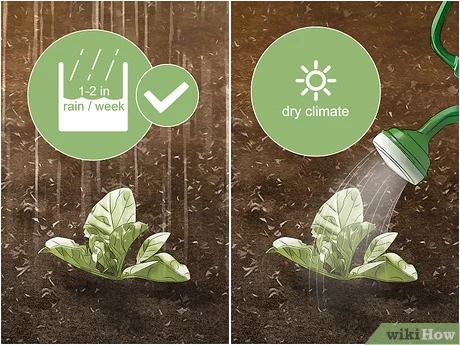
Once your Peking cabbage plants have reached maturity, it’s time to harvest them. Follow these steps to ensure a successful harvest and proper storage of your crop.
1. Harvesting:
Harvesting Peking cabbage is relatively easy. Use a sharp knife or garden shears to cut the mature cabbage heads from the base of the plant. Make sure to leave some outer leaves intact to protect the inner leaves during storage.
2. Cleaning:
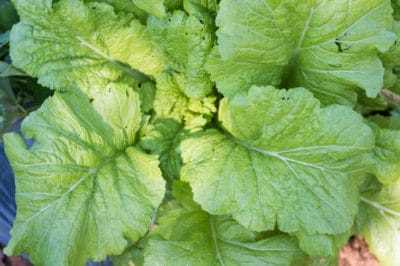
After harvest, gently remove any dirt or debris from the outer leaves. You can do this by rinsing the cabbage heads under cool running water or using a damp cloth to wipe them clean.
3. Trimming:
If any of the outer leaves are damaged or wilted, you can trim them off before storing the cabbage. This will help prevent any rot or mold from spreading to the rest of the heads.
4. Storing:
There are a few different methods you can use to store your harvested Peking cabbage:
- Refrigeration: Place the cabbage heads in a perforated plastic bag or wrap them in a damp paper towel. Store them in the vegetable crisper of your refrigerator, where they can stay fresh for up to 2 weeks.
- Cellaring: Store the cabbage heads in a cool, dark cellar or similar storage area. Make sure the temperature and humidity levels are appropriate for long-term storage. Cabbage can stay fresh this way for up to 3-4 months.
- Freezing: If you have a surplus of Peking cabbage, you can blanch and freeze it for later use. Cut the cabbage into smaller pieces or shred it, blanch in boiling water for a few minutes, then transfer to an airtight container or freezer bag. It can be stored in the freezer for up to 12 months.
5. Usage:
Peking cabbage is versatile and can be used in a variety of dishes. It can be stir-fried, added to soups and stews, or used raw in salads. Make sure to wash the cabbage thoroughly before using it in any dish.
| Storage Method | Temperature | Humidity | Shelf Life |
|---|---|---|---|
| Refrigeration | 32-40°F (0-4°C) | 90-95% | Up to 2 weeks |
| Cellaring | 32-40°F (0-4°C) | 90-95% | Up to 3-4 months |
| Freezing | 0°F (-18°C) | N/A | Up to 12 months |
“Question-Answer”
What is Peking cabbage?
Peking cabbage, also known as Chinese cabbage, is a leafy vegetable that is commonly used in Asian cuisine. It has a mild and slightly sweet flavor, and its leaves are crisp and tender.
When is the best time to plant Peking cabbage seedlings?
The best time to plant Peking cabbage seedlings is in the early summer, when the soil is warm and the danger of frost has passed.
How do I prepare the soil for planting Peking cabbage seedlings?
To prepare the soil for planting Peking cabbage seedlings, start by removing any weeds or debris from the planting area. Then, loosen the soil with a garden fork or tiller and amend it with compost or well-rotted manure to improve its fertility.
How do I plant Peking cabbage seedlings?
To plant Peking cabbage seedlings, dig a hole in the prepared soil that is slightly larger than the size of the seedling’s root ball. Gently remove the seedling from its container and place it in the hole, making sure the top of the root ball is level with the soil surface. Backfill the hole with soil and firm it gently around the base of the seedling.
How often should I water Peking cabbage seedlings?
Peking cabbage seedlings should be watered regularly, about once or twice a week, depending on the weather conditions. Keep the soil moist but not waterlogged, as excessive moisture can lead to root rot.
How do I protect Peking cabbage seedlings from pests?
To protect Peking cabbage seedlings from pests, you can use row covers or netting to create a physical barrier against insects. You can also use organic pest control methods, such as spraying a mixture of water and neem oil on the plants, or introducing beneficial insects like ladybugs or lacewings to the garden.
How long does it take for Peking cabbage seedlings to mature?
Peking cabbage seedlings typically take about 6 to 8 weeks to mature, depending on the variety and growing conditions. You can harvest the leaves when they are firm and full grown, but before they start to turn yellow or bolt.







